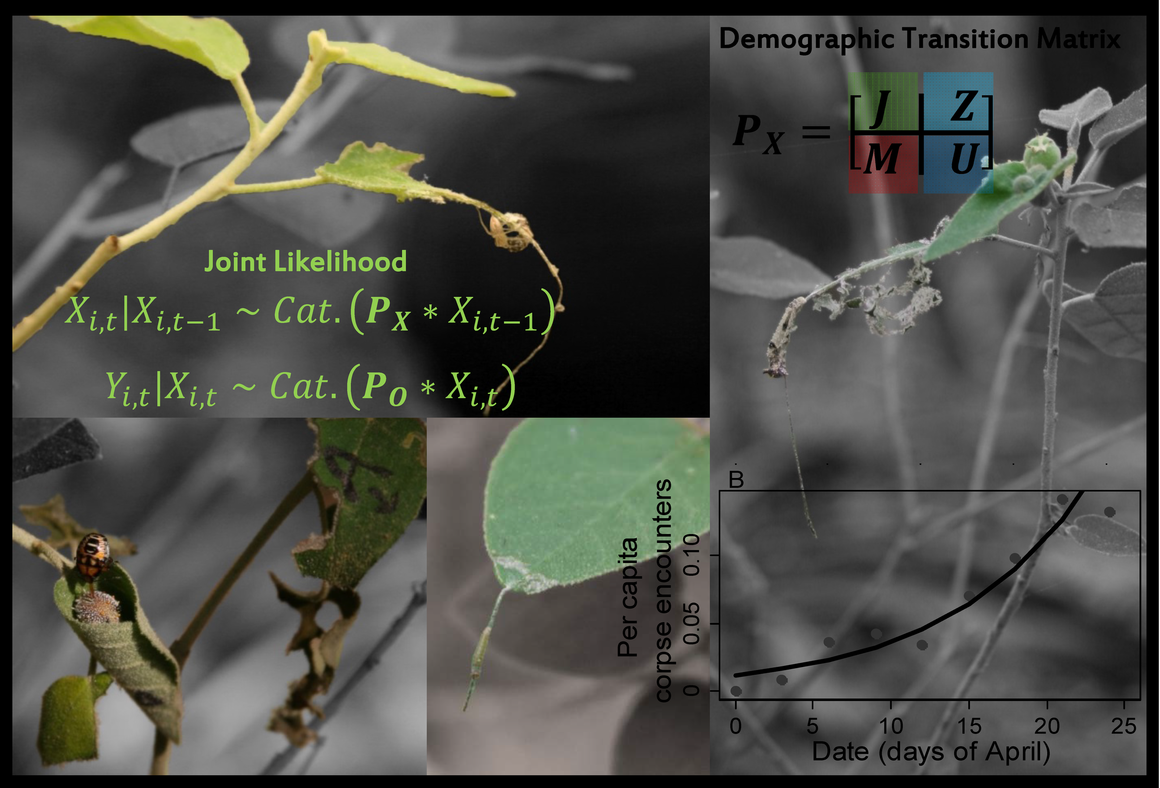Article
Version 1
Preserved in Portico This version is not peer-reviewed
Estimating Density and Temperature Dependence of Juvenile Vital Rates Using a Hidden Markov Model
Version 1
: Received: 16 December 2016 / Approved: 18 December 2016 / Online: 18 December 2016 (09:33:13 CET)
A peer-reviewed article of this Preprint also exists.
McElderry, R.M. Estimating Density and Temperature Dependence of Juvenile Vital Rates Using a Hidden Markov Model. Insects 2017, 8, 51. McElderry, R.M. Estimating Density and Temperature Dependence of Juvenile Vital Rates Using a Hidden Markov Model. Insects 2017, 8, 51.
Abstract
Organisms in the wild have cryptic life stages that are sensitive to changing environmental conditions and can be difficult to survey. In this study, I used mark-recapture methods to repeatedly survey Anaea aidea (Nymphalidae) caterpillars in nature, then modeled caterpillar demography as a hidden Markov process to assess if temporal variability in temperature and density influence the survival and growth of A. aidea over time. Individual encounter histories result from the joint likelihood of being alive and observed in a particular stage, and I included hidden states by separating demography and observations into parallel and independent processes. I constructed a demographic matrix containing the probabilities of all possible fates for each stage, including hidden states, e.g., eggs and pupae. I observed both dead and live caterpillars with high probability. Peak caterpillar abundance attracted multiple predators, and survival of fifth instars declined as per capita predation rate increased through spring. A time lag between predator and prey abundance was likely the cause of improved fifth instar survival estimated at high density. Growth rates showed an increase with temperature, but the most likely model did not include temperature. This work illustrates how state-space models can include unobservable stages and hidden state processes to evaluate how environmental factors influence vital rates of cryptic life stages in the wild.
Keywords
Anaea aidea; caterpillar demography; multi-state mark-recapture; state-space model; stage-structured matrix
Subject
Biology and Life Sciences, Ecology, Evolution, Behavior and Systematics
Copyright: This is an open access article distributed under the Creative Commons Attribution License which permits unrestricted use, distribution, and reproduction in any medium, provided the original work is properly cited.
Comments (0)
We encourage comments and feedback from a broad range of readers. See criteria for comments and our Diversity statement.
Leave a public commentSend a private comment to the author(s)
* All users must log in before leaving a comment








